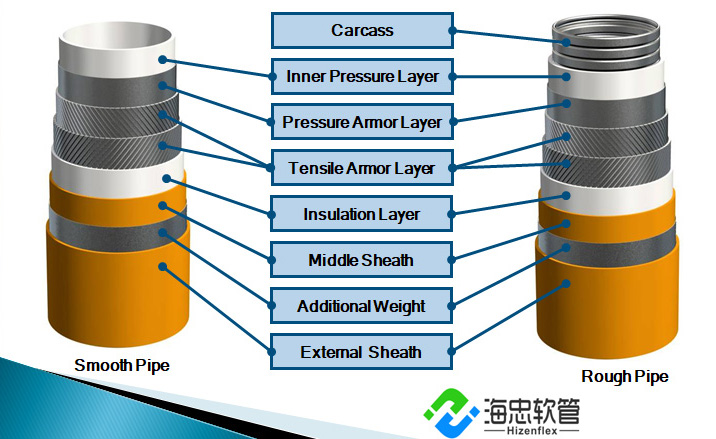

Product characteristics
The internal pressure rating is typically in the order of 70 to 700 bar (1000 –10 000 psi) depending upon pipe size, water depth and function.
Data download
Click downloadProduct details
Unbonded flexible pipes are an alternative to rigid steel flowlines and risers. In particular, the use of flexible pipes in connection with floating production systems (FPS) is an area that has been subject to a rapid growth since the beginning of the 1990s; A major advantage of using the flexible pipes is their ability to work under extreme dynamic conditions and their relatively good insulating and chemical compatibility properties compared with rigid carbon steel pipes. Furthermore, flexible pipes are used as tie-in jumpers due to their ability to function as expansion spools, and the jumpers can be installed without carrying out a detailed metrology survey. The flexible pipes are used for a multitude of functions, including production and export of hydrocarbon fluids, injection of water, gas and chemicals into an oil/gas reservoir, and service lines for wellheads.
Flexible pipes can be manufactured in long continuous lengths. Consequently, long flowlines can be installed without introducing intermediate joints, thus minimizing the risk of leaking flange connections (flowlines with a continuous length of up to 8.5 km have been installed in the North Sea area). The present size range of flexible pipes is from 2″ to 19″. Note that whereas the nominal size of a rigid steel pipe normally refers to the outer diameter (OD), the size of a flexible pipe indicates the bore, i.e. the internal diameter (ID). The internal pressure rating is typically in the order of 70 to 700 bar (1000 –10 000 psi) depending upon pipe size, water depth and function. Flexible pipes are presently used at fluid tempernature up to 130°C.
Unbonded flexible pipes are custom designed, complex multi-layered structures, built from a number of helically wound metallic wires or strips combined with concentric layers of polymers, textiles, fabric tapes and lubricants. The number, type and sequence of the component layer depend on the specific design requirements. A typical conventional unbonded flexible pipe structure is shown in Figure below, consisting of carcass, inner liner, pressure armor, tensile armor and outer sheath. All the layers in the flexible pipe are terminated in an end fitting, which forms the transition between the pipe and the connector (e.g. a flange, clamp hub or weld joint). The end fitting is designed to secure each layer of the pipe fully so that the load transfer between the pipe and the connector is obtained whilst maintaining fluid tight integrity.





